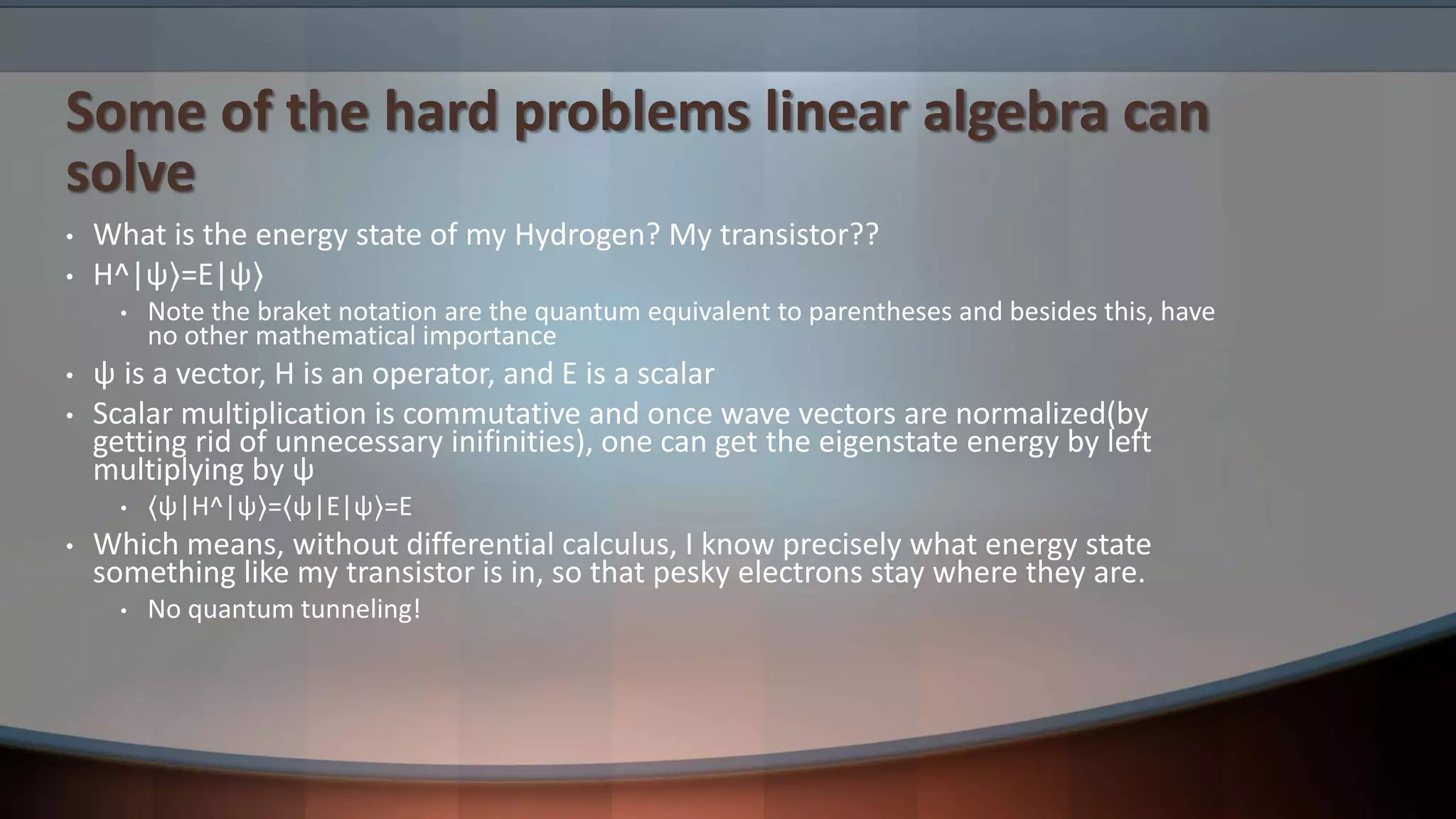- Linear algebra is important for image recognition and other fields like physics, economics, and politics. It allows analyzing relationships between multiple variables without calculus. - Python is a good platform for linear algebra due to libraries like NumPy that allow fast processing of multi-dimensional data like matrices. It also has simple syntax without semicolons. - Key concepts discussed include vectors, matrices, linear transformations, abstraction, and how linear algebra solves problems in fields like quantum mechanics. Comprehensions provide a concise way to generate sets, lists, and arrays in Python.
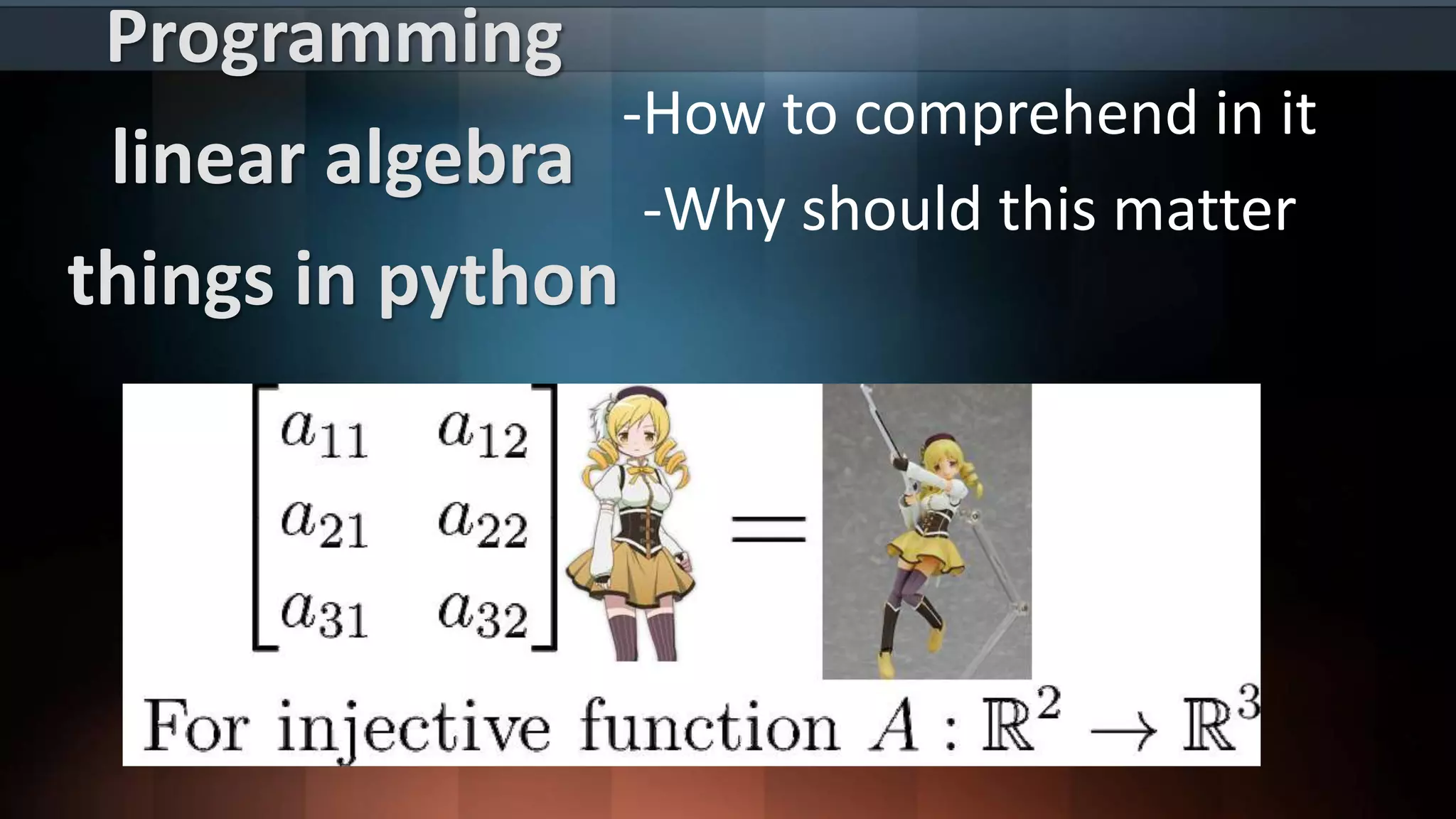

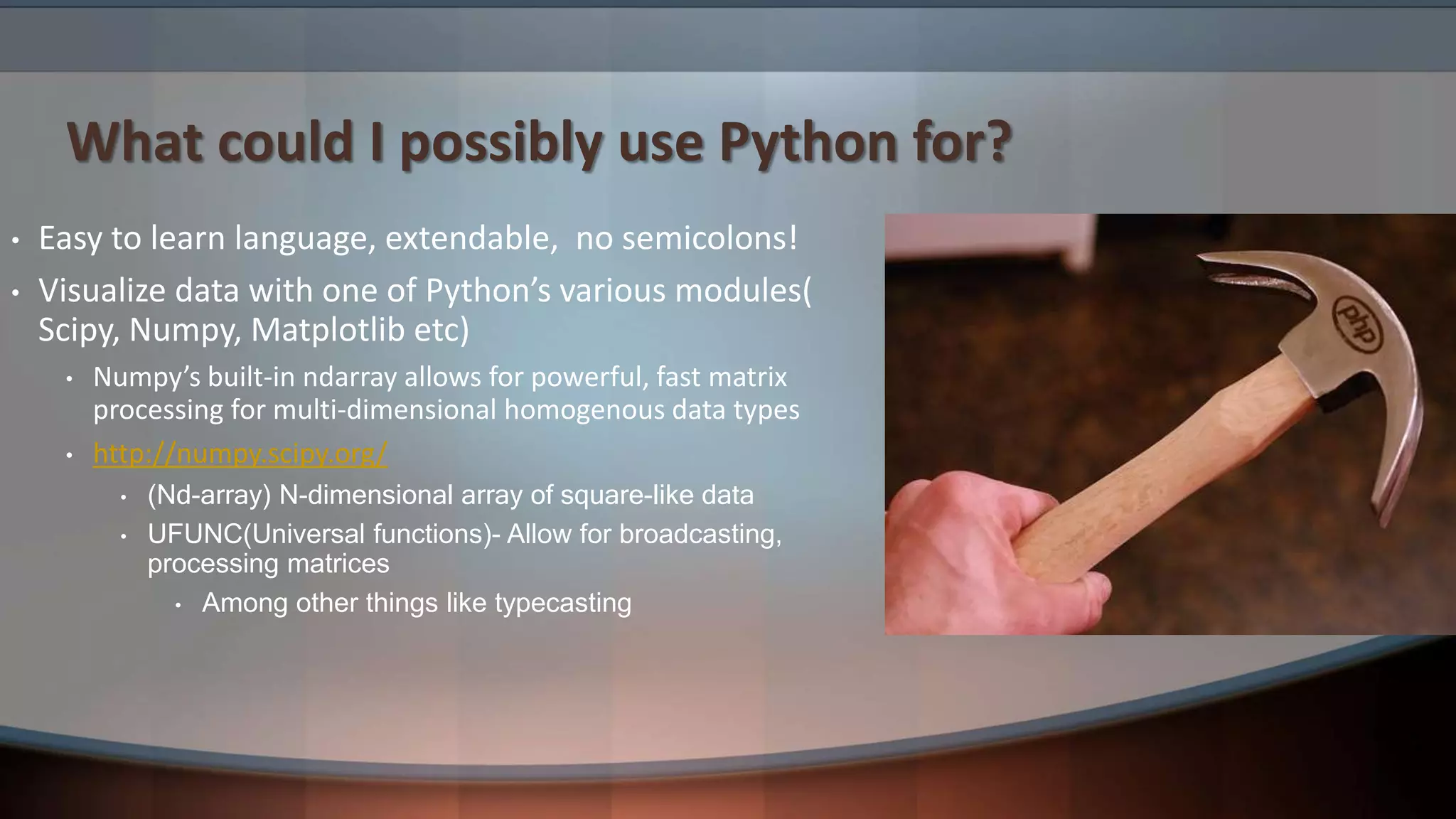

![The array information is stored in a cache and these commands extract commands from the header of the data Numpy >>> a = array([0,1,2,3]) >>> a array([0, 1, 2, 3]) >>> type(a) <type 'array'> >>> a.dtype dtype(‘int32’) Describing a 1x4 array Since python knows previously described array, it prints it out Ex: Assigning a float to into # an int32 array will truncate decimal part. >>> a[0] = 10.6 >>> a [10, 1, 2, 3] Coercion in code](https://image.slidesharecdn.com/programminginpython-200605031223/75/Programming-in-python-5-2048.jpg)
![Matplotlib- Fast, on-the-go data visualization • import matplotlib.pyplot as plt • X= ([1,2,3,4]) • plt.plot(x) • plt.ylabel(' numbers') • plt.show()](https://image.slidesharecdn.com/programminginpython-200605031223/75/Programming-in-python-6-2048.jpg)
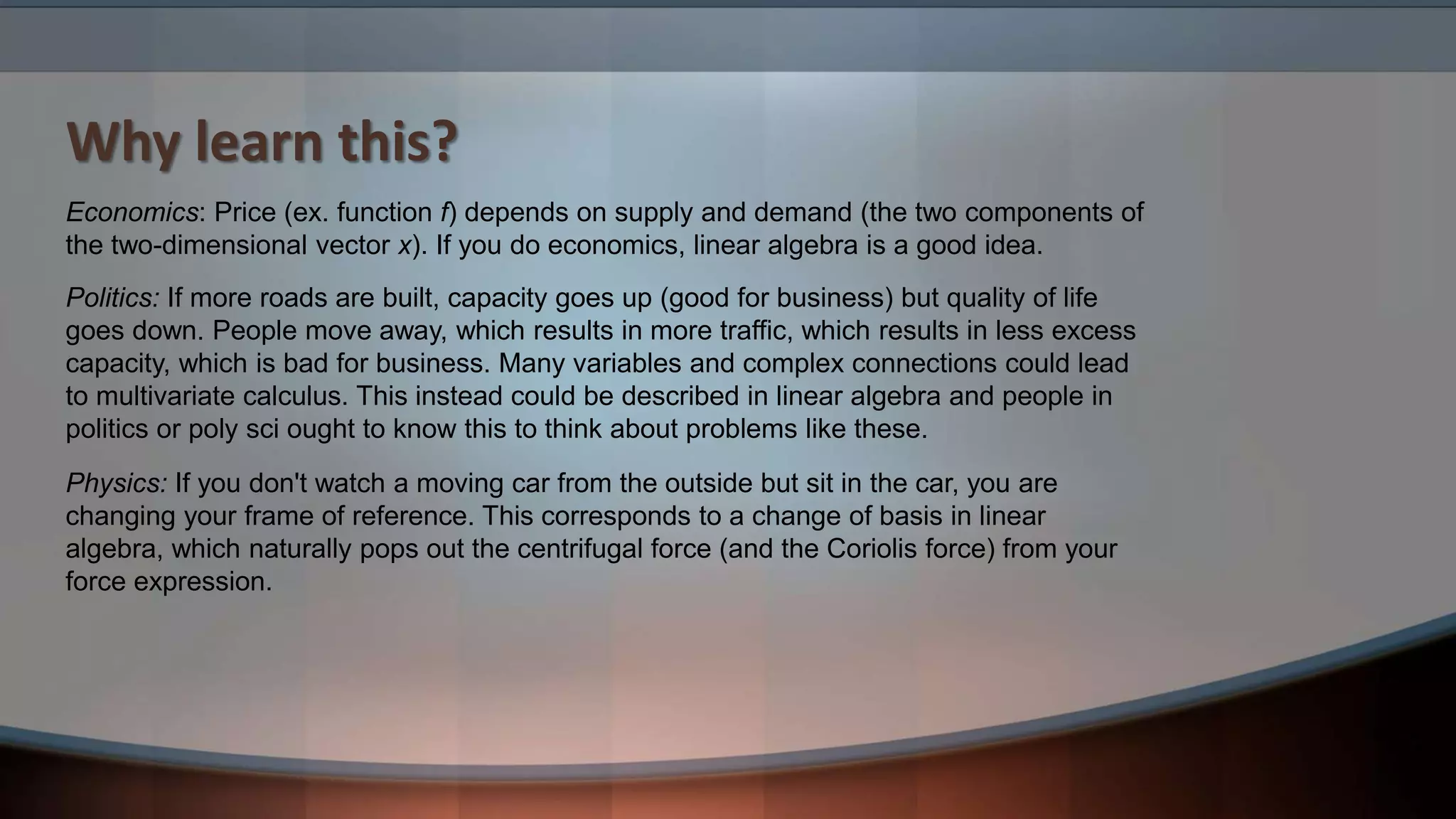
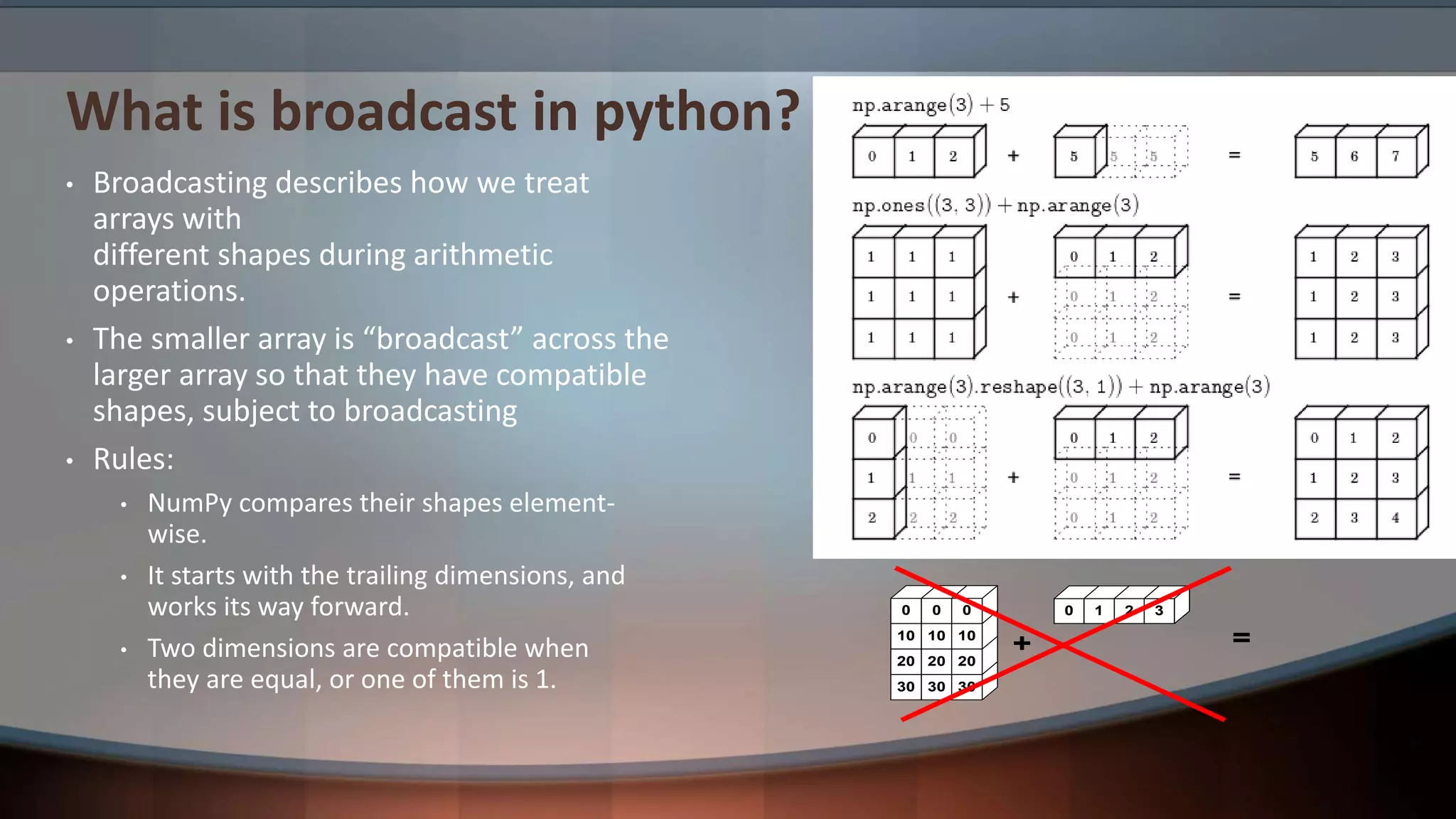
![Why should I use python for my mathematical hijinks? • Python provides a platform for easy extensibility • Large swath of extensible libraries and plenty of online support. • This effectively and efficiently makes Python something like Matlab but better • Allows for fast algorithms on machine data types on rectangular data ex. Array([0, 2, 4, 6, 8 ,10]) • Syntax is kept simple through not having to reference everything and therefore follows the KISS principle • Keeping the syntax simple (not like java) allows for faster compiling as you have less code to compile, runtime lag tends to be less.](https://image.slidesharecdn.com/programminginpython-200605031223/75/Programming-in-python-9-2048.jpg)

![Comprehensions p1 Ex. (Math) S = {x² : x in {0 ... 9}} V = (1, 2, 4, 8, ..., 2¹²) M = {x | x in S and x even} 1. Comprehension is an excellent example of this as it allows the engineer to produce a list, set, array, or dictionary through an expression Concise and readable, it utilizes functional programming and is universally accessible. Allows to write a procedure with very little code, usually within one line, also resembles the notation mathematicians use to describes sets >>> S = [x**2 for x in range(10)] >>> V = [2**i for i in range(13)] >>> M = [x for x in S if x % 2 == 0] >>> print S; print V; print M](https://image.slidesharecdn.com/programminginpython-200605031223/75/Programming-in-python-11-2048.jpg)

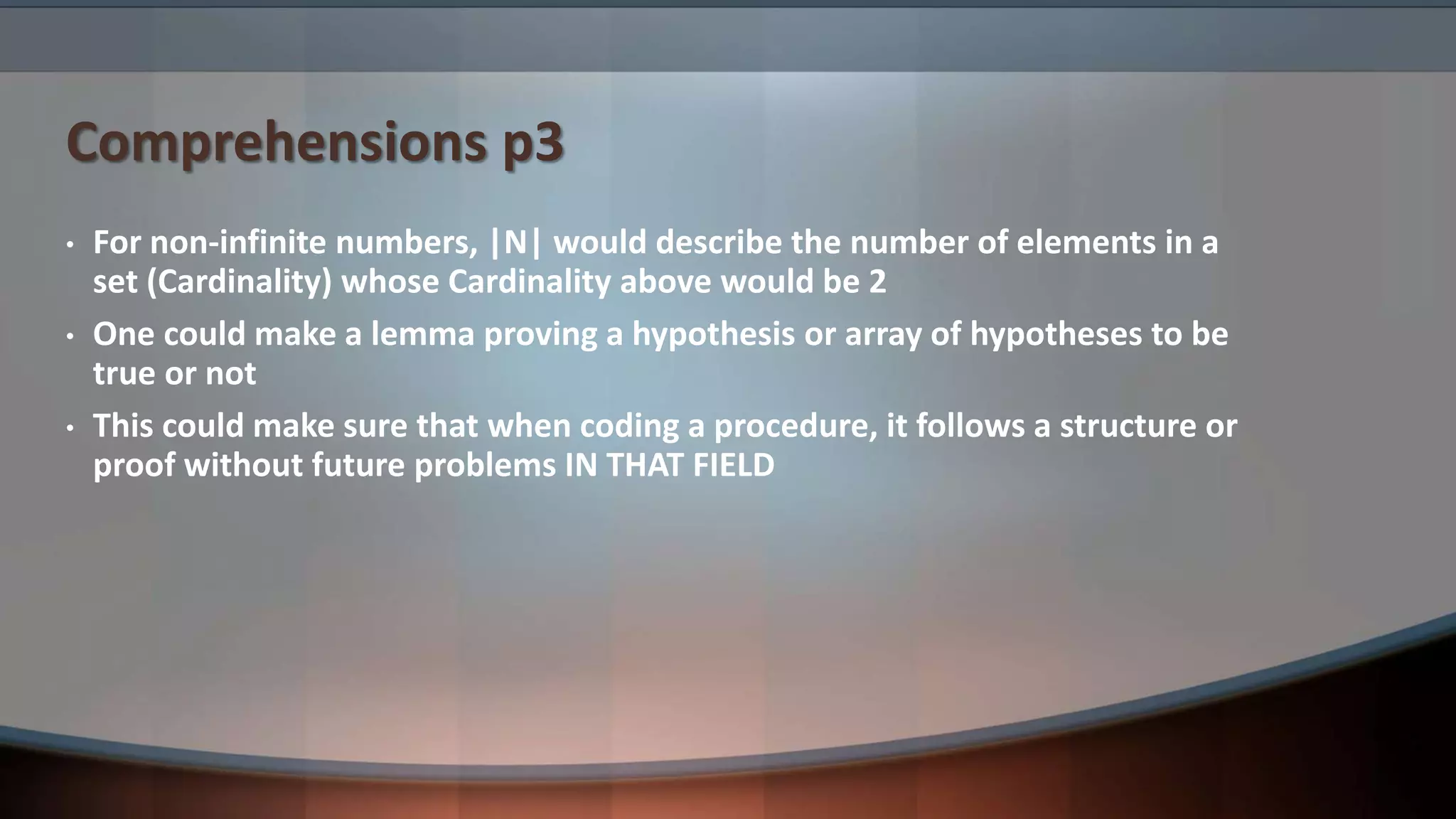
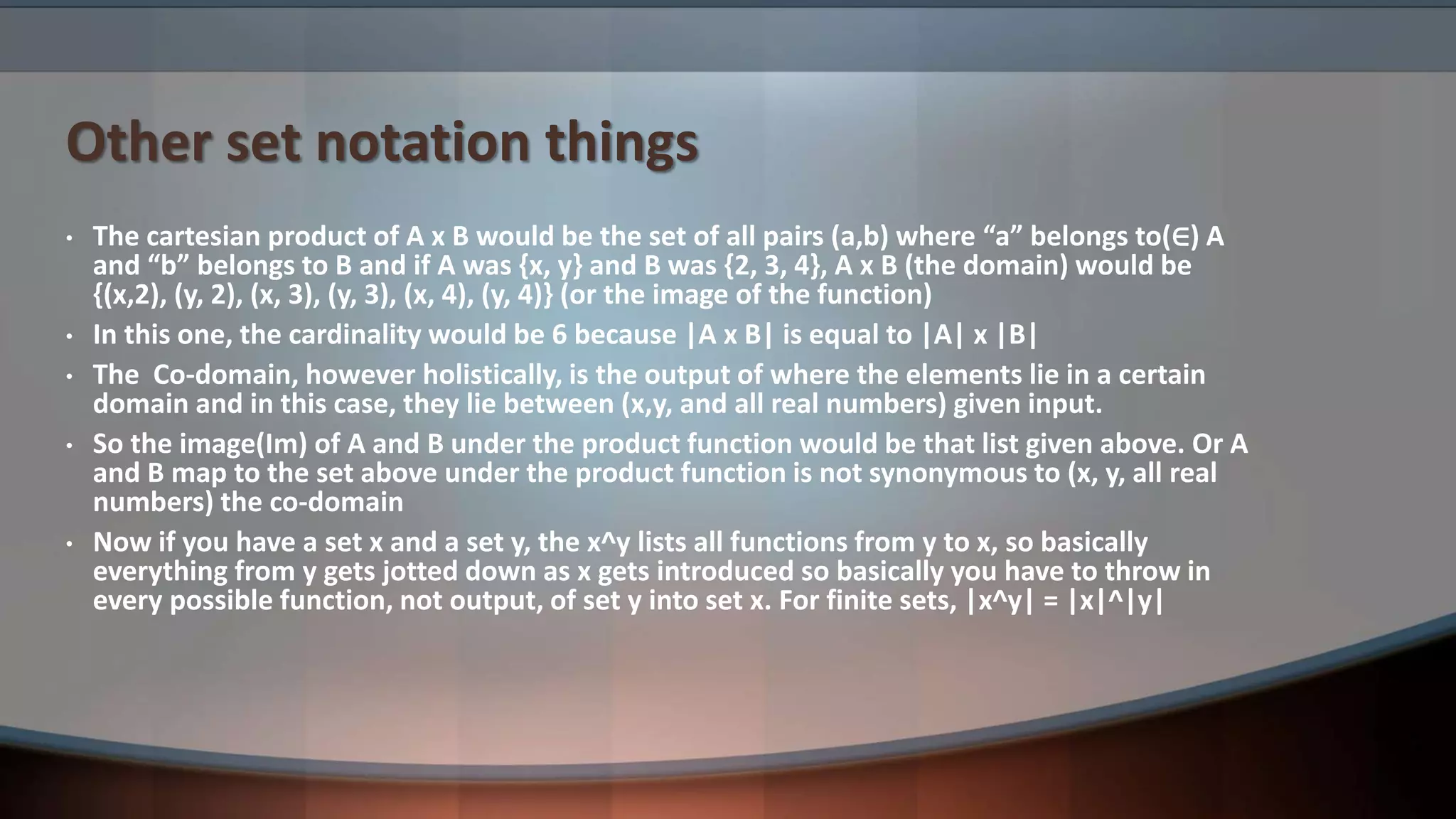
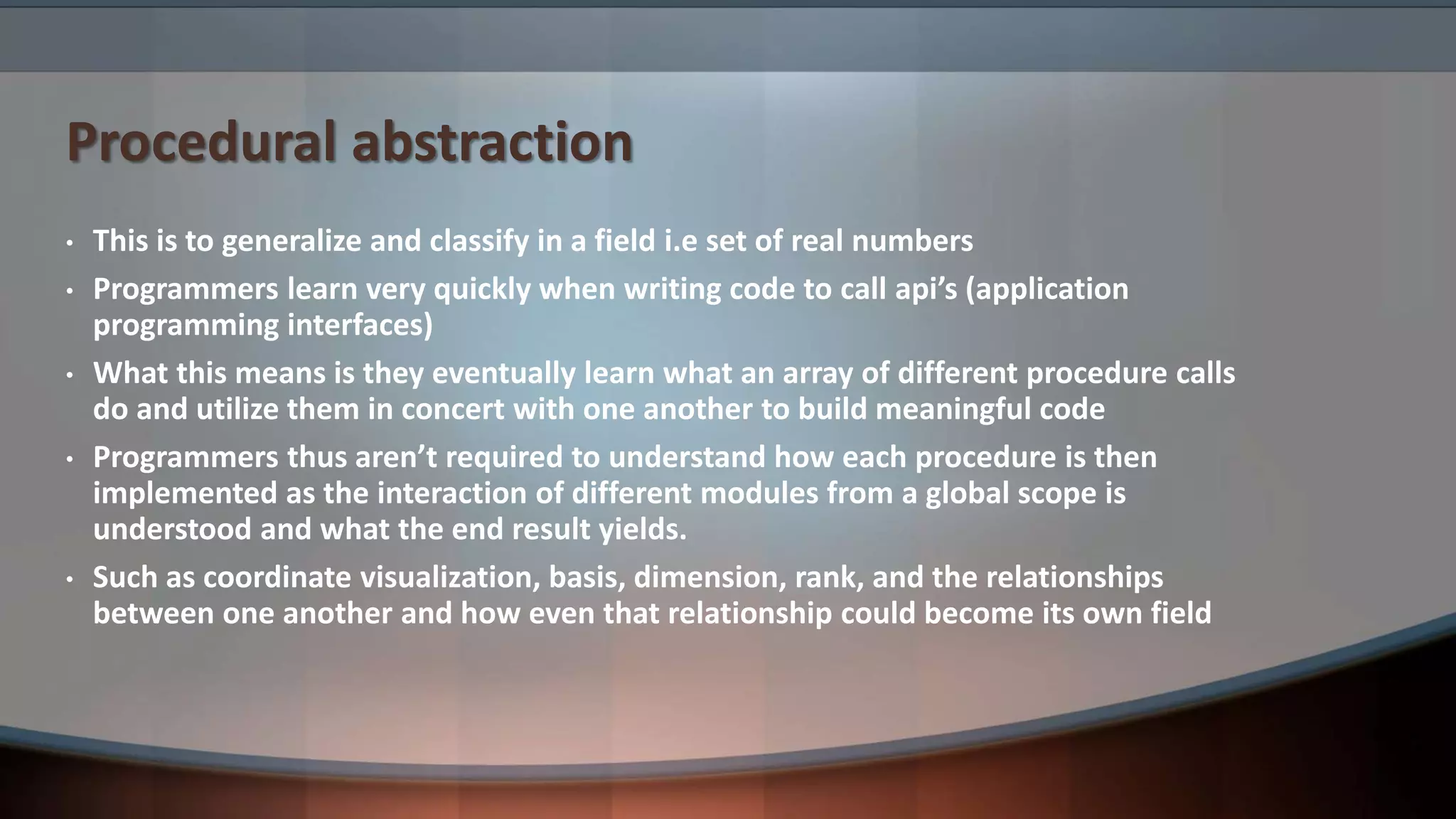
![Linear transformations • If your vector or matrix changed up on you, how do you describe it? • A linear transformation is where the origin is a fixed point and all lines remain lines, not anything curved. • Also, matrix multiplication is associative, no matter the order the end result is the same • [abcd][efgh]=[(ae+bg)(af+bh)(ce+gd)(cf+dh)] • This does not mean when you apply a rotation and shear transformation to a matrix that this is matrix multiplication, it's addition and changing up its transformation order results in a different result.](https://image.slidesharecdn.com/programminginpython-200605031223/75/Programming-in-python-16-2048.jpg)
